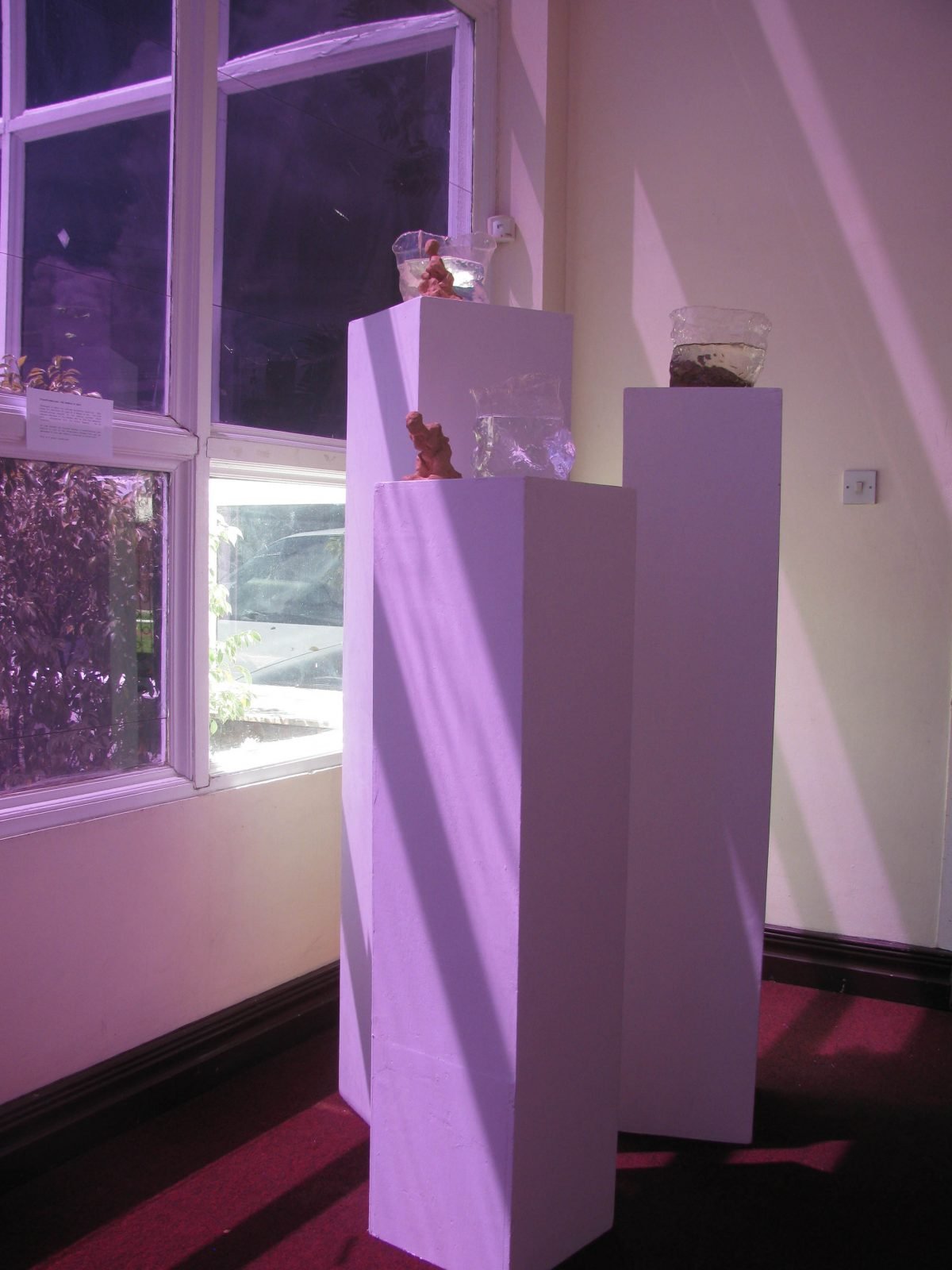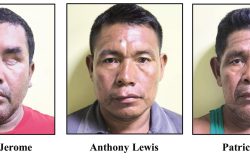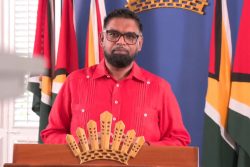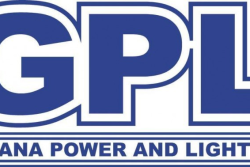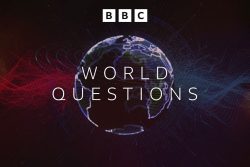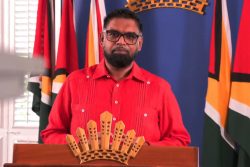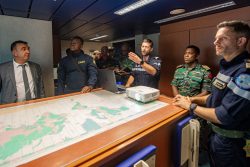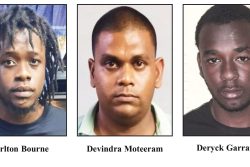In 2010, I left these shores, transiting through Barbados where I was held for a long while by immigration before being led into the departure lounge for my flight to Gatwick. I consoled myself with the thought that the Barbadian immigration officials thought my sojourn in the UK of such importance that I should be sequestered lest the temptations of their island cause me to miss my flight to the larger island. Little did they know, I was happy to be a recipient of their ‘help’ because I was perfectly ‘full-eye,’ desiring the bigger of the two islands.
My reason for travelling to the bigger of the two islands was to study. I was a recipient of a Commonwealth Scholarship to pursue post-graduate studio art studies. My destination once on the bigger of the two islands was Kingston University, London (KU) and not Central Saint Martin (CSM). I had been in a toss-up between the two: a university with a strong art programme or a highly reputed art school. A university meant diversity of academic scholarship, whereas art school meant immersion in the disciplines of visual art only. I was undecided between these two offers so I allowed my scholarship provider, the Commonwealth Scholarship Commission (CSC) to decide.
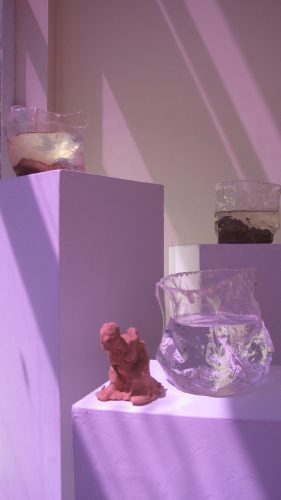
Truth be told, I left this important decision to the CSC because I felt ill-prepared by my art training at both the E R Burrowes School of Art and the UG where studio equipment and infrastructure (especially) were lacking, leaving me at a disadvantage. I was uncertain which of the two schools would allow a more successful transition. With either, I knew I had what every art student needs – access to an array of art in the museums and galleries of London.
When studying art, one needs to see as much as one can in person and in the flesh. Consider a 15 x 10 foot high painting scaled down on the page of a book. The work loses presence. It can also lose some of its textural qualities. So while I knew I needed to be in London, I was uncertain of where I would best thrive. As the CSC decided, I travelled to St Monica, a Carib community on the Pomeroon River to commune with nature and as they say, “let go and let God.” This was my way of readying myself for London – central London at CSM or a quaint bit of London suburbia at KU. The CSC chose Kingston and I admit I was delighted and relieved; I was not eager to navigate central London as I met the challenges of art school.
Kingston University offered precisely what I needed within its Knights Park campus: intellectual space to step beyond the content parameters of my painting practice, an array of equipment and materials to push the formal boundaries of my artwork, freedom to experiment and the means to test ideas, adequate guidance and critical engagement to inform the process of artmaking, and isolation from the distractions of students not engaged in similar studies despite proximity. All this was possible through the film, photography, printmaking, and other studios we post-grads shared with the undergraduates. We had the freedom to move in and out of these spaces, as much as we wished or as little as we wanted. We also had access to the weekly programme of guest lectures from art photographers which supported the BA photography programme and the postgraduate philosophy of art course. While there is more to list, I will not, lest I read like an advert.
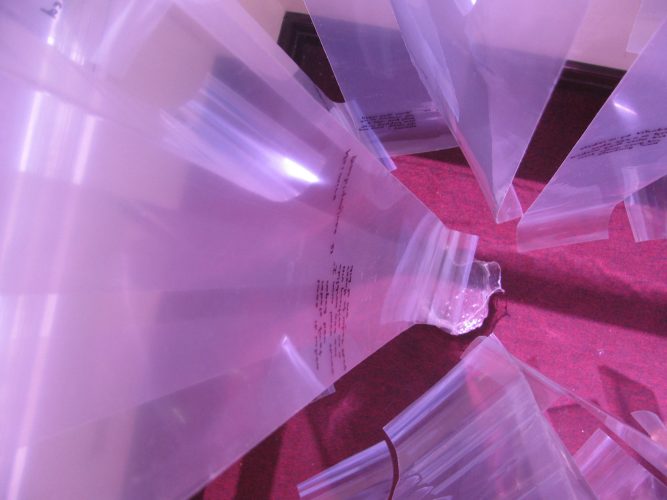
The long and short is, Kingston University turned out to be more of a gem than I expected. I sometimes wish I could return to that post-graduate year to relive the workshops and the spaces to create and to step outside of the limits of Guyana. I left as a painter and returned as a contemporary artist. I could make my own art films, audio-scapes, and sculptural constructions and work with site-specificity. Unintentionally, I returned and confounded colleague artists and art administrators. I will never forget being denied the use of a projector (yes, a projector) I had secured from the curator (ag) of the National Gallery of Art. The occasion was the 2014 Guyana Visual Art Competition and Exhibition (GNVACE) and the claim was that other artists participating in the competition would think I was given an unfair advantage.
The projector was to show my work – a film made with borrowed cameras and borrowed final-cut pro software. The projector was to facilitate a projection of this work at the desired size. It did not occur to the conveyor of this perspective that a projector is to film what a plinth is to a sculpture or a wall is to a painting.
Naively and optimistically, I returned late 2011 and assumed there would be a receptive space for my new approaches in the Guyana art community. This was not the case. In 2012, the Guyana Women Artists’ Association (GWAA) afforded me a gorgeous little room adjacent to the main space they were using for their annual exhibition at the National Library. This space was granted with objection from one within the executive, although it incurred no additional cost and could not be used easily. Unfortunately, I did not realise that this instance of denial would be the first of many objections to my work being shown properly within the wider Guyana art community.
Nonetheless, I showed Transformations (2012) – a reconceptualising of my postgraduate final project. I showed three related works along with appropriated sound from another source. Upon entering the room, the first work Transformations I (The Essence of Self) was sculptural and performative. At intervals during the exhibition, I submerged two of three unfired clay figures into an organically formed plastic container of water. The water slowly reconstituted the figures until a beautiful mass of clay remained covered by a clear body of water. Both the water and clay returned to their original state through this slow, at times dramatic process. In Transformations II (The Voices of our Silence), snippets of actual testimony from women and girls who had experienced rape as a weapon of war in the Eastern Democratic Republic of Congo were presented as text on strips of clear plastic. The strips of plastic were of different lengths related to the age of the woman or girl whose story was shared on it. Some strips of plastic remained without text to remind us of the stories that would go untold by choice or circumstance. The strips of plastic were suspended in the light-filled space over a single organically formed plastic container with clear water. That represented healing waters – tears, baptismal water, waters of restoration. In Transformations III (7 Beauties), I positioned seven pieces of wood of varying lengths in a corner against the wall. The wood had been reclaimed from a demolished wooden structure. Some of the wood was stripped of layers of paint to reveal their original beauty. The point was that there is sometimes unexpected beauty in things we wish to throw away, people whose experiences leave them scarred and less than ideal. 7 Beauties was a subtle reference to the women and girls I read about whose bodies once violated were abandoned. On continuous play, within the room, could be heard celestial chants from the Benedictine Monks.
Transformation (2012) was both conceptual and activist, with performative elements. In conceptual art, the ideas supersede the materiality of the work. As a consequence, non-traditional materials may be used because the idea is of greatest importance and not the object that is produced. In being an installation, the work was created and existed for a period in a very specific space. Installed in a different space, especially one without the wonderfully tall eastern and southern-facing windows which flooded the white room with light, the work would communicate differently. The space was intended to be one to recall hurts and pains but also the possibilities to transcend, to heal. The work was also intended to bring a situation that was geographically removed to our consciousness. It was meant to bring attention to abuse meted out to bodies in the process of mining coltan, a mineral used in many of our electronic devices.
I knew the work would shock and upset those with humanity. I recall my friend-in-and-beyond-art exiting the room and saying, “Guyanese won’t understand you.” In my head, I threw my hands up as I said, “There she goes being negative!” But she was right! I was being naïve.
(Continues next week)
Akima McPherson is a multi-media artist, art historian, and educator.
